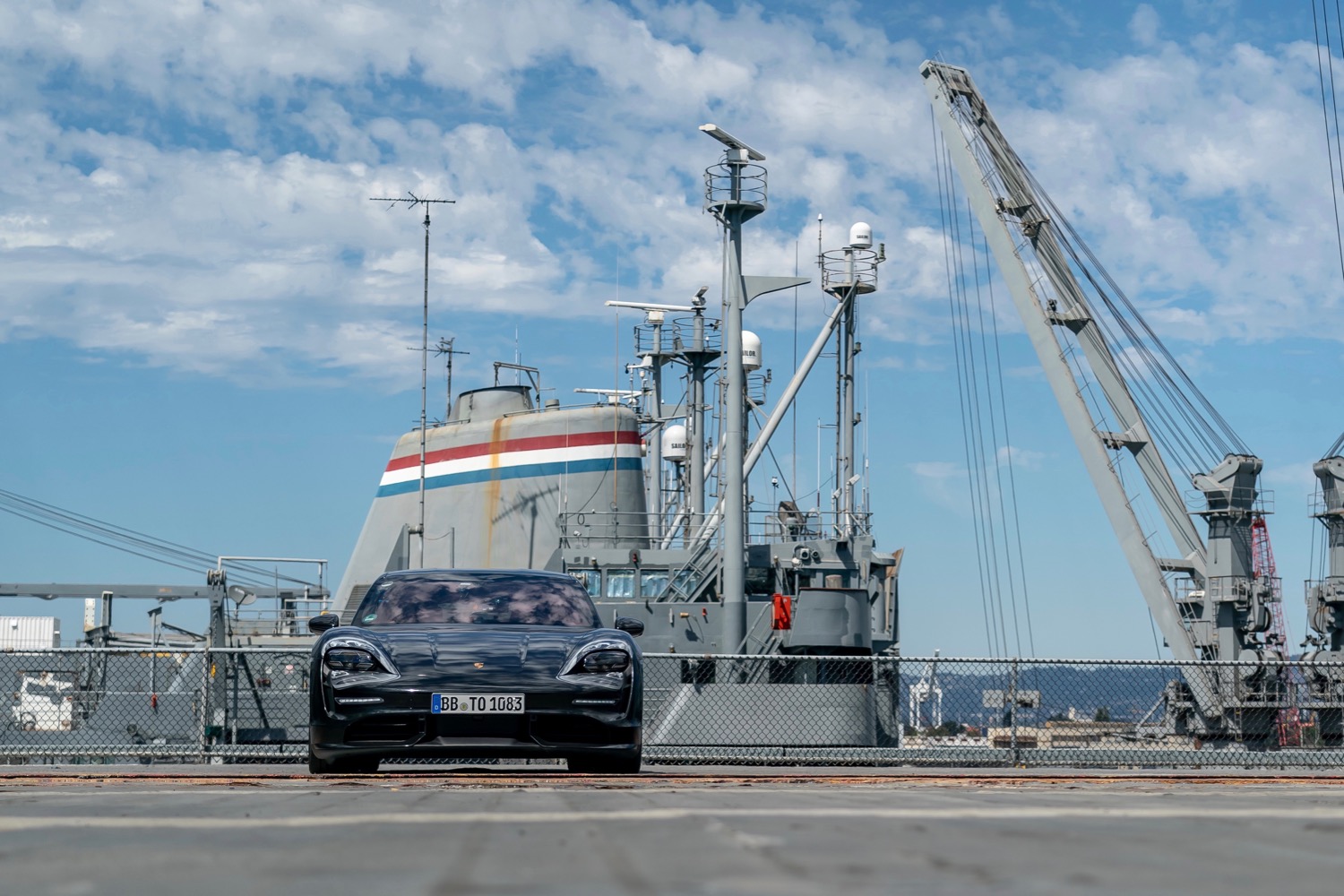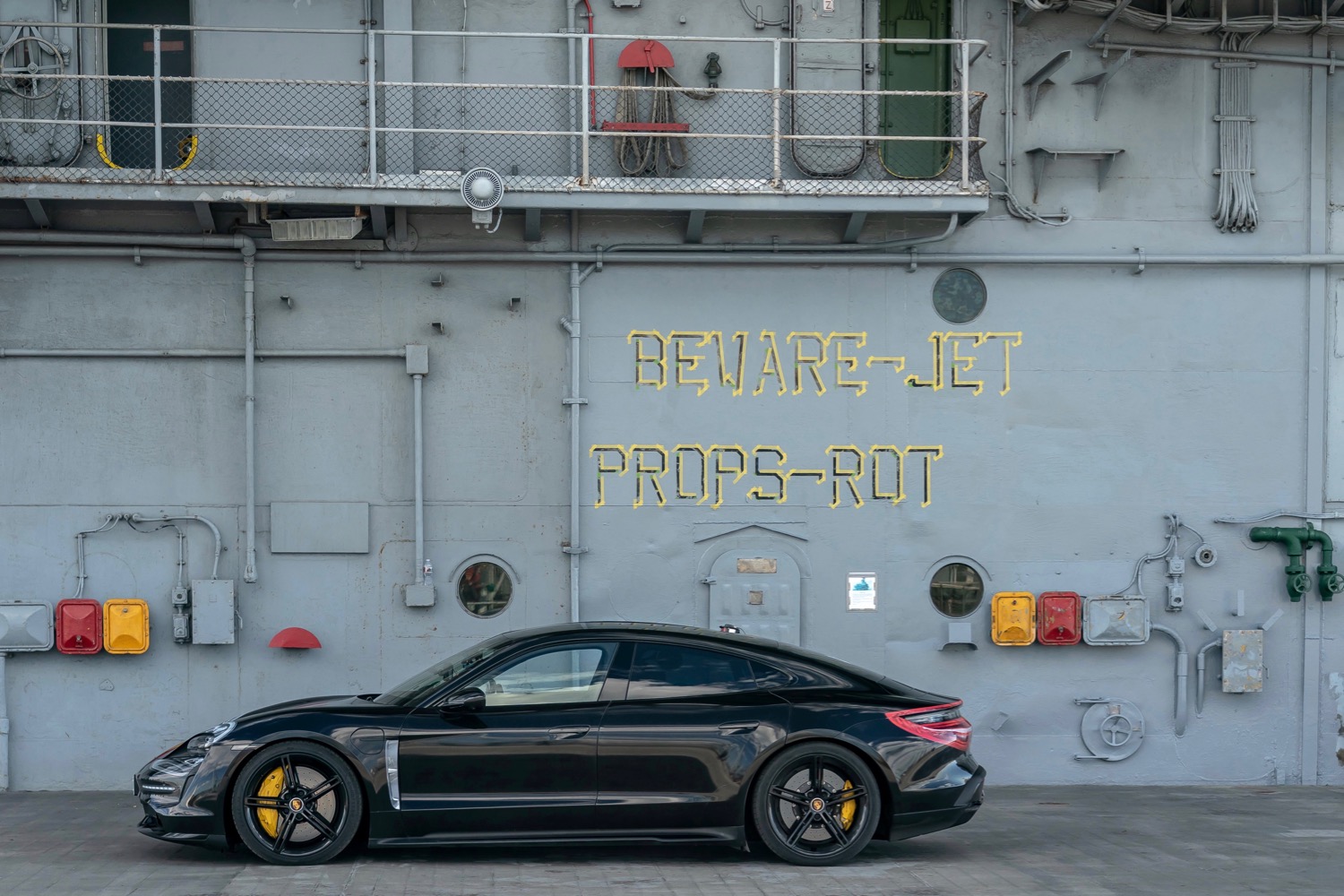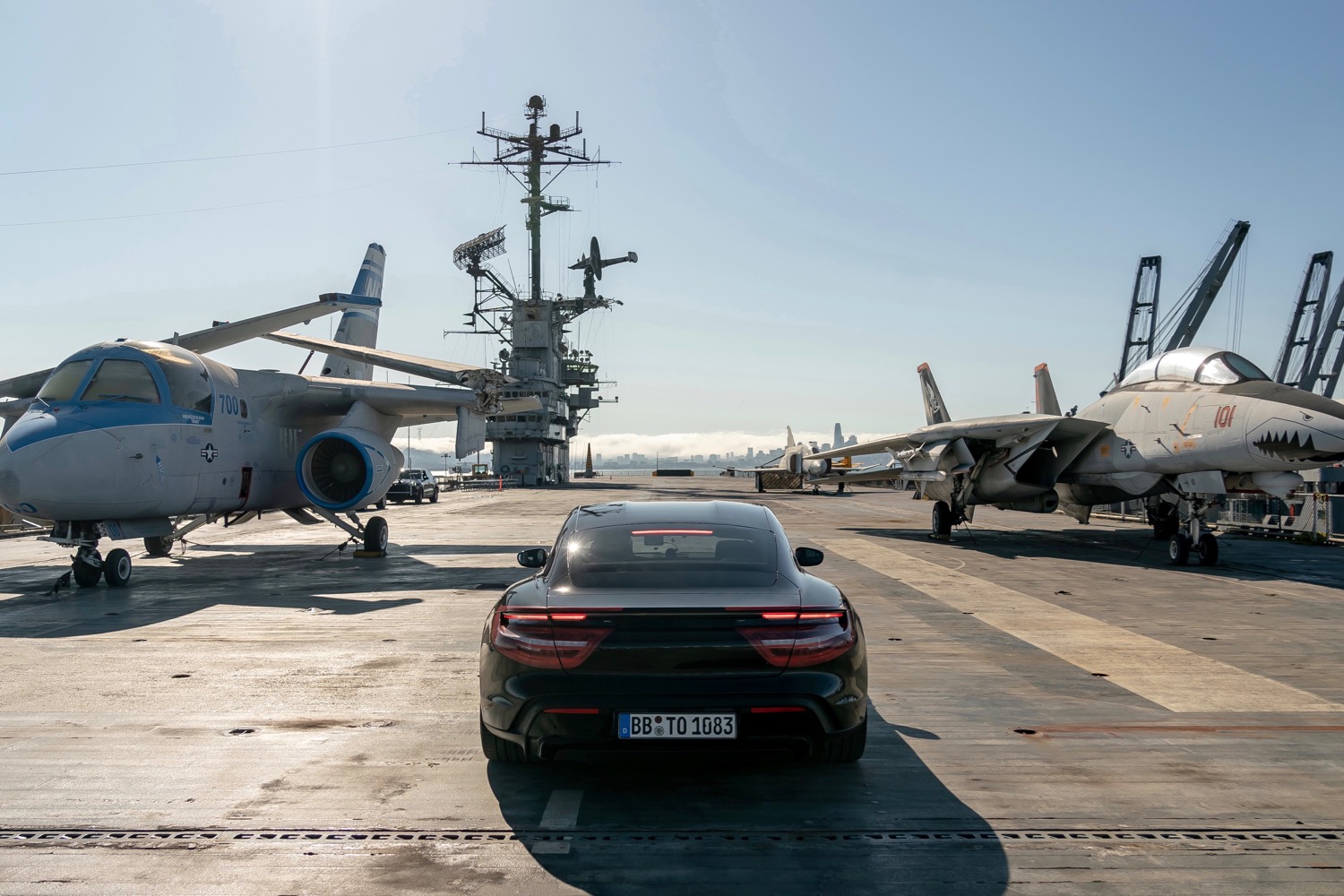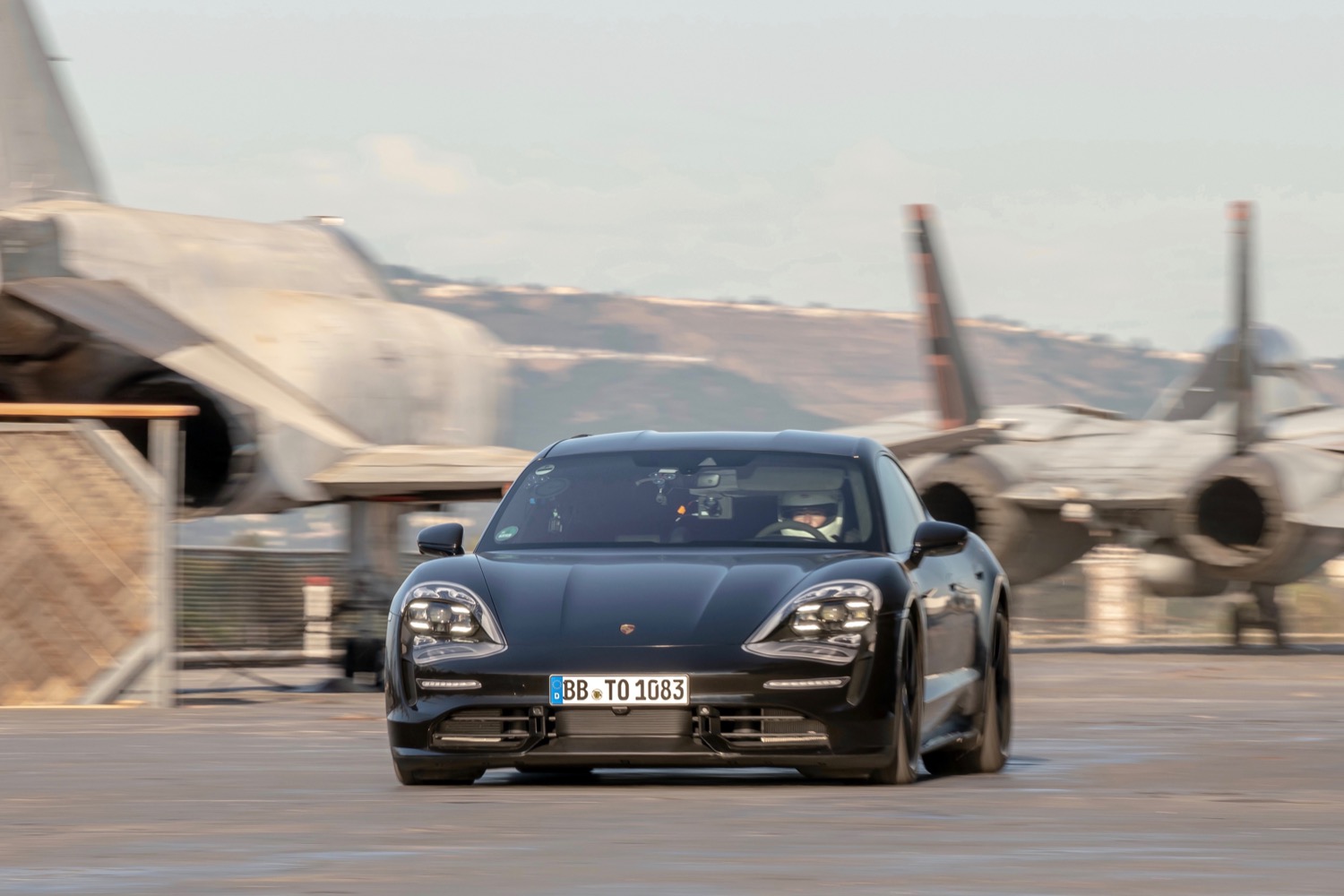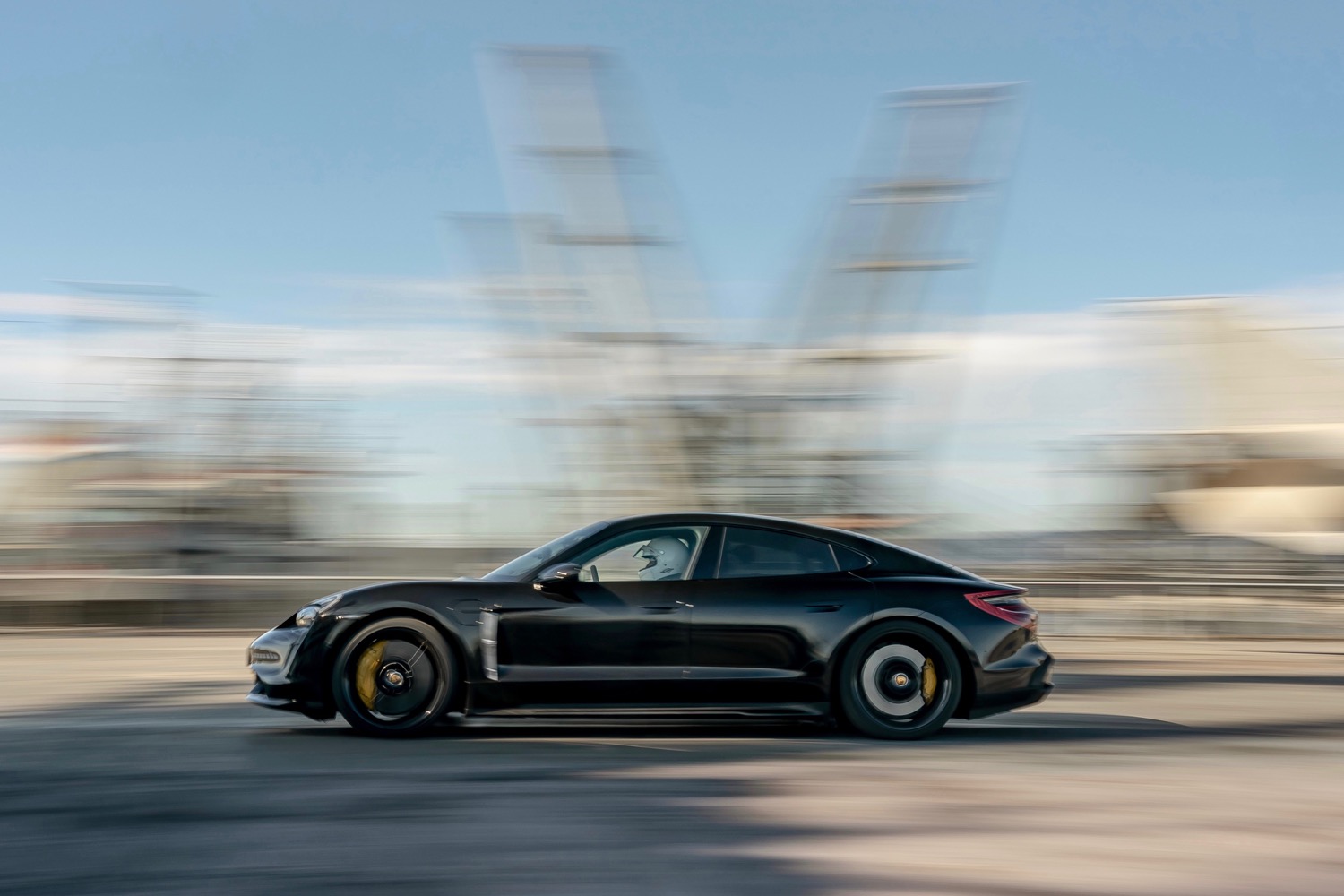Porsche isn’t quite ready to unveil the finished version of the Taycan — its first production electric car — but the German automaker is finding interesting things to do with Taycan prototypes in the meantime. Porsche has already subjected a Taycan (pronounced “tie-con”) to 26 consecutive acceleration tests, and drove one around a racetrack for 24 hours straight. For its latest stunt, Porsche decided to go full Top Gear and do an acceleration and braking test on the flight deck of a decommissioned aircraft carrier.
Racing driver Shea Holbrook was challenged to go from zero to 90 mph and back to zero within the confines of the USS Hornet’s 869-foot flight deck. In addition to leaving little margin for error, the deck’s bumpy steel surface was a poor substitute for a racetrack’s smooth pavement, Holbrook said in a statement. Nonetheless, she managed to hit 90 mph in just 422 feet, and came to a stop with 98 feet to spare, according to Porsche. The entire run took 10.17 seconds, Porsche said.
A near-silent electric car is a big contrast to the roar of fighter aircraft on takeoff — a familiar sound when the USS Hornet is in service. The ship was commissioned in 1943, serving in the Pacific Theater during World War II. In 1969, the Hornet brought Apollo 11 astronauts Neil Armstrong, Buzz Aldrin, and Michael Collins back to the United States after their journey to the moon. The ship is now a museum in Alameda, California.
The Taycan can’t match the top speed of the aircraft that once graced the Hornet’s flight deck, but it will be among the sportiest electric cars around. Porsche has said the Taycan will do zero to 62 mph in under 3.5 seconds, with a top speed of 155 mph. The car will recharge quickly too: Porsche has also developed an 800-volt charging system that the automaker claims will be one of the quickest available.
Porsche will finally take the wraps off the Taycan on September 4 at the 2019 Frankfurt Motor Show. The Mission E concept that presaged the Taycan was unveiled at the Frankfurt show in 2015, so it’s fitting that the production model will make its debut there. Porsche plans to follow up the Taycan with other electric models, including an electric version of the Macan crossover.
Editors' Recommendations
- Porsche’s most powerful production car is an EV
- Watch BMW test an electric jet pack that lets you fly at 186 mph
- Here’s how Porsche plans to give electric SUVs snow-conquering grip
- Porsche shaves nearly $80,000 from the Taycan EV’s price with new 4S variant
- Lamborghini’s first EV will be ‘mature’ and based on the Taycan, report says

